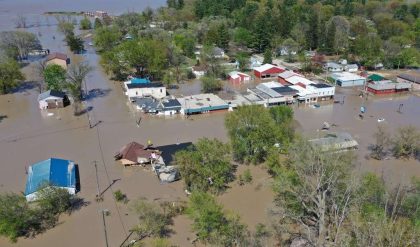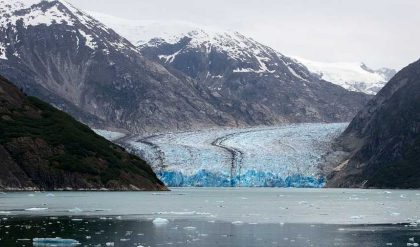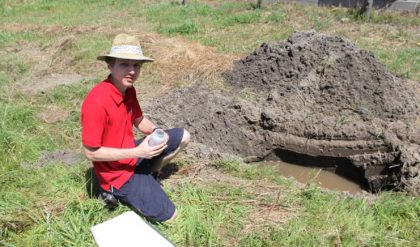
Walking through a park isn’t always a walk in the park when it comes to conducting stormwater inspections. Our team routinely spots issues in need of attention when inspecting stormwater infrastructure; that’s why inspections are so important.
Princeton Hydro has been conducting stormwater infrastructure inspections for a variety of municipalities in the Mid-Atlantic region for a decade, including the City of Philadelphia. We are in our seventh year of inspections and assessments of stormwater management practices (SMPs) for the Philadelphia Water Department. These SMPs are constructed on both public and private properties throughout the city and our inspections focus on areas served by combined sewers.
Our water resource engineers are responsible for construction oversight, erosion and sediment control, stormwater facilities maintenance inspections, and overall inspection of various types of stormwater infrastructure installation (also known as “Best Management Practices” or BMPs).

The throat of a sinkhole observed by one of our engineers while on site.
Our knowledgeable team members inspect various sites regularly, and for some municipalities, we perform inspections on a weekly basis. Here’s a glimpse into what a day of stormwater inspection looks like:
The inspector starts by making sure they have all their necessary safety equipment and protection. For the purposes of a simple stormwater inspection the Personal Protection Equipment (PPE) required includes a neon safety vest, hard hat, eye protection, long pants, and boots. Depending on the type of inspection, our team may also have to add additional safety gear such as work gloves or ear plugs. It is recommended that inspectors hold CPR/First Aid and OSHA 10 Hour Construction Safety training certificates.
Once they have their gear, our inspection team heads to the site and makes contact with the site superintendent. It’s important to let the superintendent know they’re there so that 1) they aren’t wondering why a random person is perusing their construction site, and 2) in case of an emergency, the superintendent needs to be aware of every person present on the site.
Once they arrive, our team starts by walking the perimeter of the inspection site, making sure that no sediment is leaving the project area. The team is well-versed in the standards of agencies such as the Pennsylvania Department of Environmental Protection, the Pennsylvania Department of Transportation, the New Jersey Department of Environmental Protection, and local County Soil Conservation Districts, among others. These standards and regulations dictate which practices are and are not compliant on the construction site.
After walking the perimeter, the inspection team moves inward, taking notes and photos throughout the walk. They take a detailed look at the infrastructure that has been installed since the last time they inspected, making sure it was correctly installed according to the engineering plans (also called site plans or drainage and utility plans). They also check to see how many inlets were built, how many feet of stormwater pipe were installed, etc.
If something doesn’t look quite right or needs amending, our staff makes recommendations to the municipality regarding BMPs/SMPs and provides suggestions for implementation.
One example of an issue spotted at one of the sites was a stormwater inlet consistently being inundated by sediment. The inlet is directly connected o the subsurface infiltration basin. When sediment falls through the inlet, it goes into the subsurface infiltration bed, which percolates directly into the groundwater. This sediment is extremely difficult to clean out of the subsurface bed, and once it is in the bed, it breaks down and becomes silt, hindering the function of the stormwater basin.

Before

After
To remedy this issue, our inspection team suggested they install stone around the perimeter of the inlet on three sides. Although this wasn’t in the original plan, the stones will help to catch sediment before entering the inlet, greatly reducing the threat of basin failure.
Once they’ve thoroughly inspected the site, our team debriefs the site superintendent with their findings. They inform the municipality of any issues they found, any inconsistencies with the construction plans, and recommendations on how to alleviate problems. The inspector will also prepare a Daily Field Report, summarizing the findings of the day, supplemented with photos.
In order to conduct these inspections, one must have a keen eye and extensive stormwater background knowledge. Not only do they need to know and understand the engineering behind these infrastructure implementations, they need to also be intimately familiar with the laws and regulations governing them. Without these routine inspections, mistakes in the construction and maintenance of essential stormwater infrastructure would go unnoticed. Even the smallest overlook can have dangerous effects, which is why our inspections team works diligently to make sure that will not happen.





